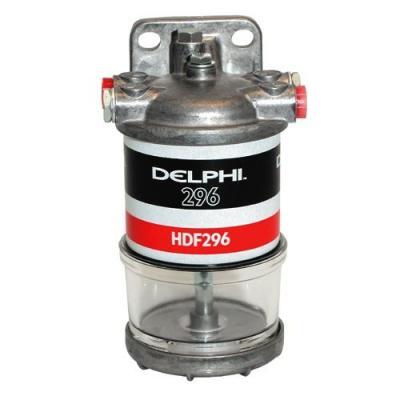
Slime strings & clogged fuel filters.
Diesel bacteria: for those who are unfamiliar with this phenomenon, we can assure that prevention is better than cure. Anyone who has experienced it won’t forget any time soon. In less than no time, fuel filters or even complete pipes and pumps are clogged up and stop working due to long black flakes and brown strings. Say goodbye to your boat trip.
Diesel bacteria can be compared to algae in an aquarium. They mainly form on the bottom layer of water and diesel in the tank. Water is heavier than most fuels and will collect at the bottom of the tank. Because the intake or drain valve of the fuel pump is often in a higher position, the water can stay in the tank for a long period of time.
Bacteria in your diesel?
Like many fuels, diesel is a natural product and contains microbes. The right conservation and treatment will cause little or no problems with bacterial growth. But with the right breeding environment, such as water, they will multiply rapidly. Bacteria are always present in the fuel, but also in the outside air from where they can enter the tank through venting holes. Condensation and oxygen from outside, in combination with a malfunctioning water separator, makes a fuel tank the perfect breeding ground. Especially in water sports, the circulation speed of the fuel tank is not always the same.

Condensation as breeding ground
A fuel tank is usually mounted on the inside of the boat. Therefore, the tank cools down at night and warms up during the day. Oxygen that moves through the process of heating and cooling always contains moisture. Warm air that cools down forms drops of water as condensation to the tank wall.The water drips down and sinks to the bottom of the tank, below the diesel. Diesel has a lower specific gravity than water. A practical tip is to keep the air space above the fuel as small as possible. Always fill up the tank completely when you are planning not to use the boat for a lengthy period of time (use winter diesel before the winter break). After all, the less air exists at the upper inside part of the tank where oxygen and condensation can settle on the walls of the tank, the better. Warmth and humidity may be the perfect conditions for diesel bacteria to multiply rapidly, but they can also do their work during winter. For that reason is a clean and dry tank ventilation in the right place desirable.
Rain and waves
Also, the incorrect position of e.g. the tank filler cap or vent may quickly cause water to accumulate inside the tank. Things like rainwater that seeps through an outside air vent, or splashes of water that hit the deck and get into your tank, must be taken into consideration. Also remember the correct sealing of the diesel filler cap on the outside and periodically check the seals inside the cap.
Is this new?
The government has ordered that diesel must contain less sulphur than in the past. Burning sulphur is very damaging to the environment, but sulphur also stopped bacteria growth in diesel in the past. Moreover, since recently a few percent of biodiesel is added to the diesel. Biodiesel is extracted from vegetable products and is therefore gaining importance as the world’s oil reserves are dwindling. But biodiesel has also the ability to attract water quickly and contains a higher percentage of microbes.

What can be done about it?
If possible, check visually for water formation in the tank, like a large “bubble” of water at the bottom. Never checked or drained this before? In that case, this will be a good start. Does the problem recur frequently? Check what the cause could be as described above, e.g. a malfunction or a venting problem, etc. The supply pump that feeds the fuel to the engine often pumps the diesel in the tank several times around via the return line. In this way, the tank is often kept clean and filtered. A correct filter installation with a water separator is able to collect water from the tank. Since water is heavier than diesel, it is collected at the bottom of the glass. The glass should show clear diesel. If clouded, it would indicate contamination. Frequent contamination and hard to drain the tank? The solution may lie in an external pump unit that continuously circulates the diesel through a filter set and separates the water.
